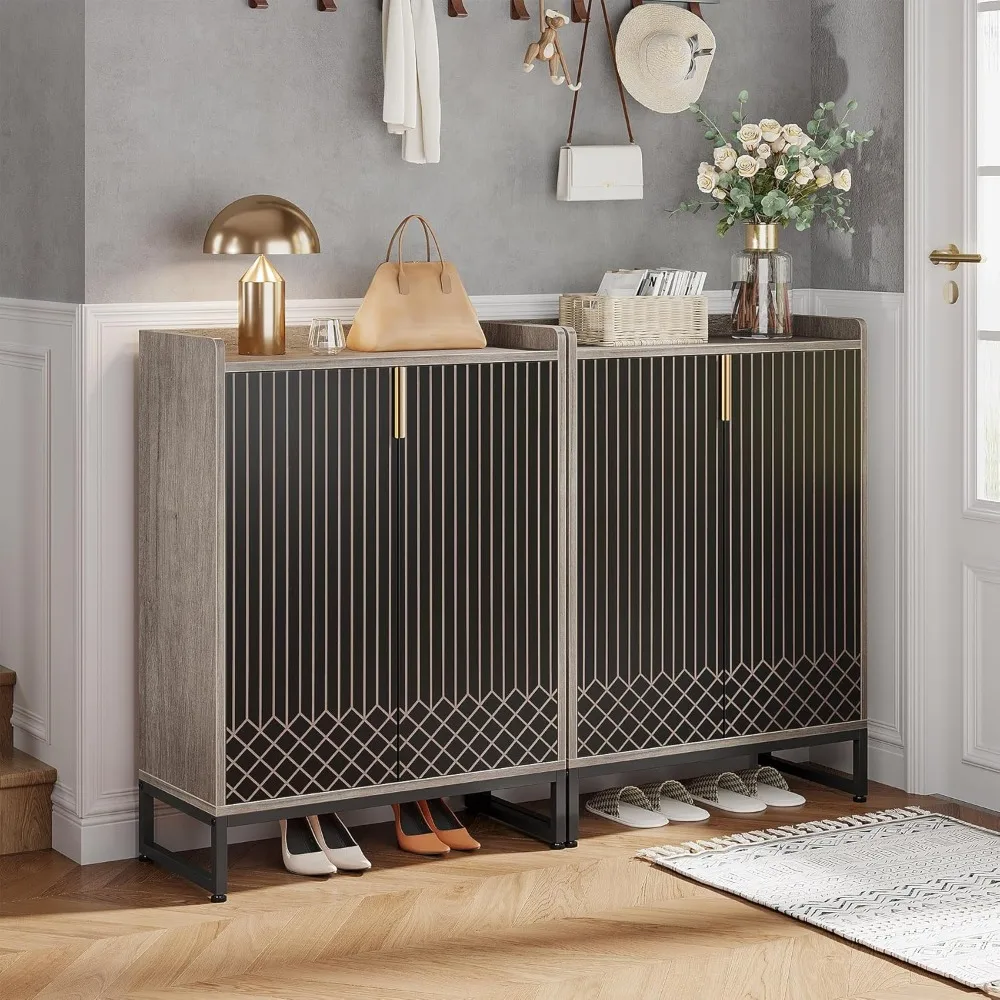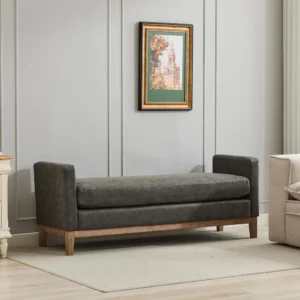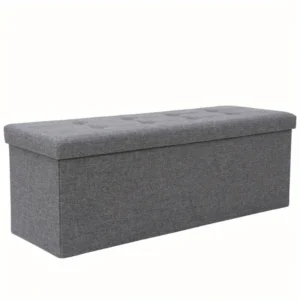The Psychology of Minimalist Entryways: Why They Matter
A minimalist entryway is more than just a decluttered space—it’s a thoughtful arrangement that embodies simplicity, functionality, and intentionality. True minimalist entryways focus on having only what you need, with each item carefully selected for both purpose and aesthetic value.
The impact of walking into a clean, organized entryway extends far beyond simple tidiness. Research shows that entering an organized space can significantly reduce stress hormones and create a sense of calm. This psychological effect is particularly important for entryways, which serve as the transition between the outside world and your personal sanctuary.
Your entryway sets the tone for your entire home experience. When organized with minimalist principles, it creates:
- Lower stress levels upon arriving home
- Smoother transitions between activities
- Improved morning routines with less scrambling for essentials
- Enhanced mood for both residents and guests
Studies suggest that people living in cluttered homes experience up to 30% more daily stress, while those with organized entry systems save approximately 15 minutes each day by not searching for keys, bags, and other essentials. Understanding the importance of minimalist entryway design can transform not just your space, but also your daily experience within it.
Core Principles of Minimalist Entryway Organization
Creating and maintaining a minimalist entryway relies on several fundamental principles that guide both design and daily habits:
Principle #1: Ruthless Decluttering
Apply the one-year usage rule: if you haven’t used an item in the past year, it doesn’t belong in your entryway. This space should contain only regularly used items that support coming and going from your home. Seasonal items, rarely used accessories, and miscellaneous storage all belong elsewhere.
Principle #2: Everything Needs a Designated Home
As organization expert Marie Kondo emphasizes, every item must have a fixed location. This principle is particularly crucial in entryways, where items are constantly in motion. When every object has a specific place—keys in a dish, bags on a hook—you eliminate the “floating item” problem that leads to clutter.
Principle #3: Create a Landing Strip for Essentials
Establish a specific zone where everyday items land when you enter. This might be a small tray for keys and wallet, hooks for bags, or a dish for sunglasses. This landing strip becomes a habit-forming zone that prevents items from migrating throughout your home.
Principle #4: Embrace Vertical Storage Solutions
Entryways often have limited floor space, making vertical storage essential. Use wall space effectively with hooks, shelves, and tall, narrow furniture that maximizes storage while minimizing footprint.
Principle #5: Apply the “One In, One Out” Maintenance Rule
For every new item that enters your entryway system, another should leave. This prevents gradual accumulation and maintains the careful balance you’ve created.
The selection of furniture pieces that support these core principles is critical to maintaining a truly minimalist entryway over time.
Essential Organization Systems for Daily Items
Footwear Management Systems
Shoes often create the most visible clutter in entryways. A minimalist approach to footwear requires implementing:
- The active rotation system: Limit displayed shoes to only those currently in season and regular use (typically 3-5 pairs per person)
- Hidden storage: Keep additional pairs in closed cabinets or behind doors
- Vertical solutions: Utilize narrow shoe towers or wall-mounted racks that maximize height rather than width
- Wet shoe solutions: Designate a specific tray or mat area for drying wet footwear that keeps moisture contained
Effective solutions for footwear management combine practicality with aesthetic harmony, keeping shoes accessible yet visually contained.
Outerwear Organization
Coats, jackets, and accessories require thoughtful systems:
- Strategic hook placement: Install hooks at different heights to accommodate different garment lengths and family members
- Spacing considerations: Allow 6-8 inches (15-20 cm) between hooks to prevent overcrowding
- Seasonal rotation: Keep only current-season items in the primary entryway area
- Visual boundaries: Limit the number of hooks or hanger spaces to prevent accumulation
When comparing traditional coat racks versus wall-mounted hooks, consider that hooks typically offer more flexibility and a cleaner visual appearance, while racks provide standalone solutions that don’t require wall mounting.
Small Essentials Control Center
The smallest items often create the most chaos in entryways:
- Mail management: Create a simple sorting system with three categories—action required, reference, and recycle
- Keys and wallet station: Designate a small dish or hanging system that becomes the only place these items ever reside
- Charging solutions: Integrate a discrete charging area for phones and devices that keeps cords contained
- Quick-grab container: Use a small basket for items like sunglasses, hand sanitizer, or masks
Combination solutions for outerwear and footwear storage can efficiently address multiple organization needs within a single piece of furniture, making them ideal for minimalist spaces.
Minimalist Furniture That Maximizes Function
The foundation of a well-organized minimalist entryway lies in selecting furniture that provides maximum functionality while maintaining clean lines and visual simplicity.
Multifunctional Bench Solutions
Entryway benches with built-in storage offer:
– Seating for putting on and removing shoes
– Hidden storage compartments for seasonal items
– Shoe shelves that contain clutter
– Slim profiles (typically 18 inches/45 cm deep) that work in tight spaces
The best bench designs feature:
– Lids that stay open safely during use
– Durable materials that withstand daily weight-bearing
– Neutral finishes that integrate with various home styles
– Cushioning that balances comfort with easy cleaning
Slim Console Tables
For entryways too narrow for benches, slim console tables provide:
– Surface area for essential items and minimal decor
– Small drawers for keys and other small items
– Lower shelves for baskets that contain loose items
– Depths of just 10-12 inches (25-30 cm) to preserve walkway space
Wall-Mounted Systems
Wall-mounted solutions keep floor space open while providing:
– Hook systems that adjust to changing needs
– Floating shelves for keys, mail, and decorative elements
– Cabinet units that conceal clutter behind clean facades
– Modular components that can expand or contract based on needs
Options for space-efficient seating with storage maximize functionality in even the most compact areas. The right space-saving benches for minimalist entryways blend into their surroundings while providing crucial organization infrastructure.
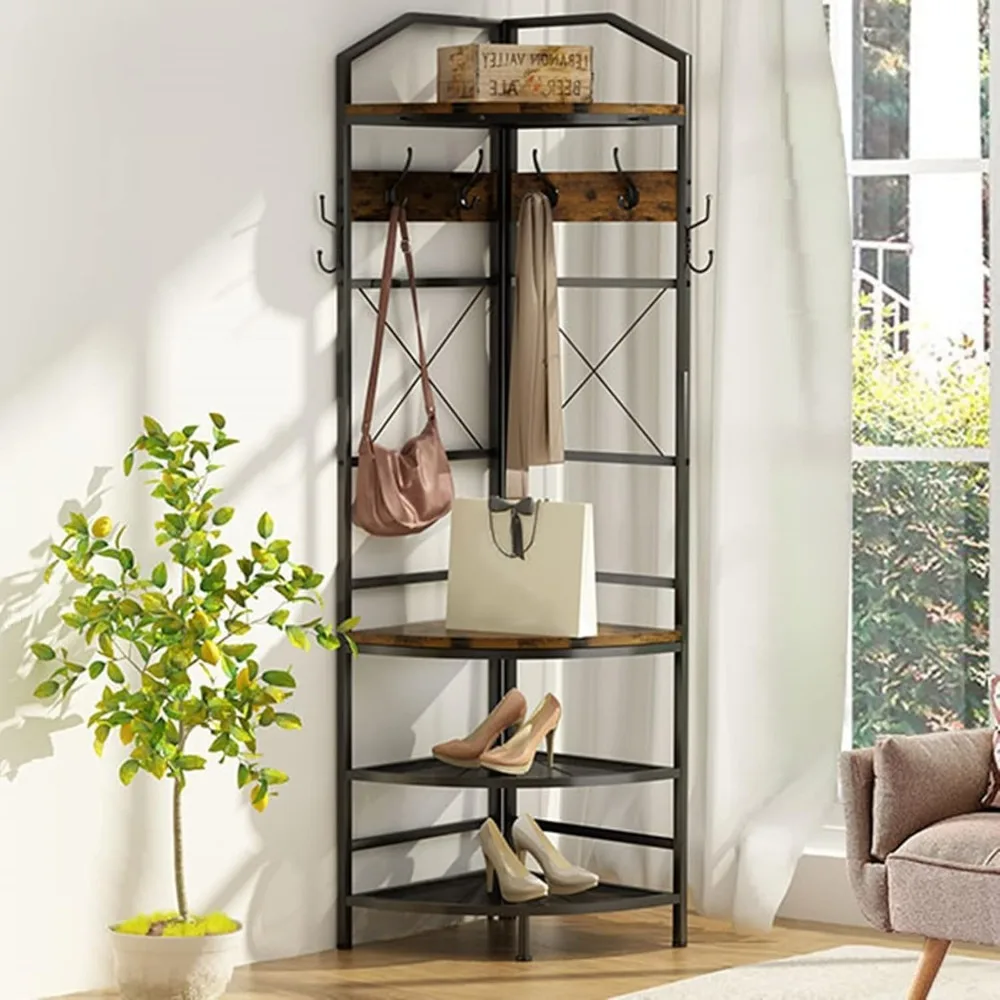
Space-Specific Solutions: Adapting to Your Entryway
Small or Narrow Entryway Solutions
When space is at a premium:
– Choose furniture with depths under 12 inches (30 cm)
– Utilize corner spaces with angled furniture pieces
– Install floating components that keep floor space open
– Use mirrors strategically to create the illusion of more space
– Focus on absolute essentials—eliminate anything that isn’t used daily
Open-Concept Entryway Organization
Without walls to define your entryway:
– Use furniture placement to create visual boundaries
– Establish consistent color schemes that define the space
– Install area rugs to designate the “landing zone”
– Create sight lines that naturally guide movement through the space
– Select furniture that coordinates with adjacent rooms
Family-Friendly Minimalist Systems
Maintaining minimalism with multiple family members requires:
– Color-coded or labeled zones for each person
– Lower hooks and storage that children can reach independently
– Limited quantities of each item type (e.g., one hook for one coat per person)
– Regular “reset” routines that everyone participates in
– Teaching children minimalist values through modeling and explanation
Strategies for making entryways work for busy households demonstrate that minimalism isn’t just for single adults or couples—it can be adapted to families of all sizes and ages.
Creating Visual Calm: Aesthetic Considerations
A minimalist entryway should feel peaceful and welcoming rather than stark or empty. Achieving this balance requires attention to:
Color Theory for Minimalist Spaces
- Neutral base colors (white, cream, gray) create a sense of spaciousness
- Limited color palette (2-3 colors maximum) reduces visual noise
- Single accent color adds interest without overwhelming
- Tone-on-tone variations add depth without complexity
Texture and Material Balance
- Contrast smooth surfaces (glass, metal) with organic elements (wood, textile)
- Incorporate natural materials that add warmth without busy patterns
- Use textiles sparingly but intentionally (a single runner, bench cushion)
- Select high-quality materials that age well and require minimal maintenance
Strategic Decor Placement
- Follow the “rule of three” for decorative objects maximum
- Choose items with both beauty and function (attractive key dish, sculptural hook)
- Keep 50% of surfaces completely clear
- Select one focal point rather than multiple competing elements
The principles of aesthetic approaches for minimalist spaces create harmony between function and visual appeal, ensuring your space feels intentional rather than empty.
Daily and Seasonal Maintenance Routines
Even the best-designed minimalist entryway requires maintenance to stay functional and appealing.
60-Second Daily Reset
Create a brief end-of-day routine:
– Return any misplaced items to their designated homes
– Hang coats and bags on their proper hooks
– Place shoes in their storage areas
– Sort mail into appropriate containers
– Wipe down frequently touched surfaces
Weekly Maintenance Checklist
Establish a 10-minute weekly ritual:
– Remove and store any items that aren’t currently needed
– Sweep or vacuum the entryway floor completely
– Check for items that have migrated from other rooms
– Ensure all storage solutions are functioning properly
– Wipe down all surfaces including doors and light switches
Seasonal Rotation System
Four times per year:
– Evaluate all items currently in the entryway
– Remove off-season items for storage elsewhere
– Bring in appropriate seasonal items (winter accessories, summer hats)
– Clean storage containers thoroughly while empty
– Reassess if any systems need modification
Storage solutions that help maintain organization support these maintenance routines by making daily resets simple and intuitive.
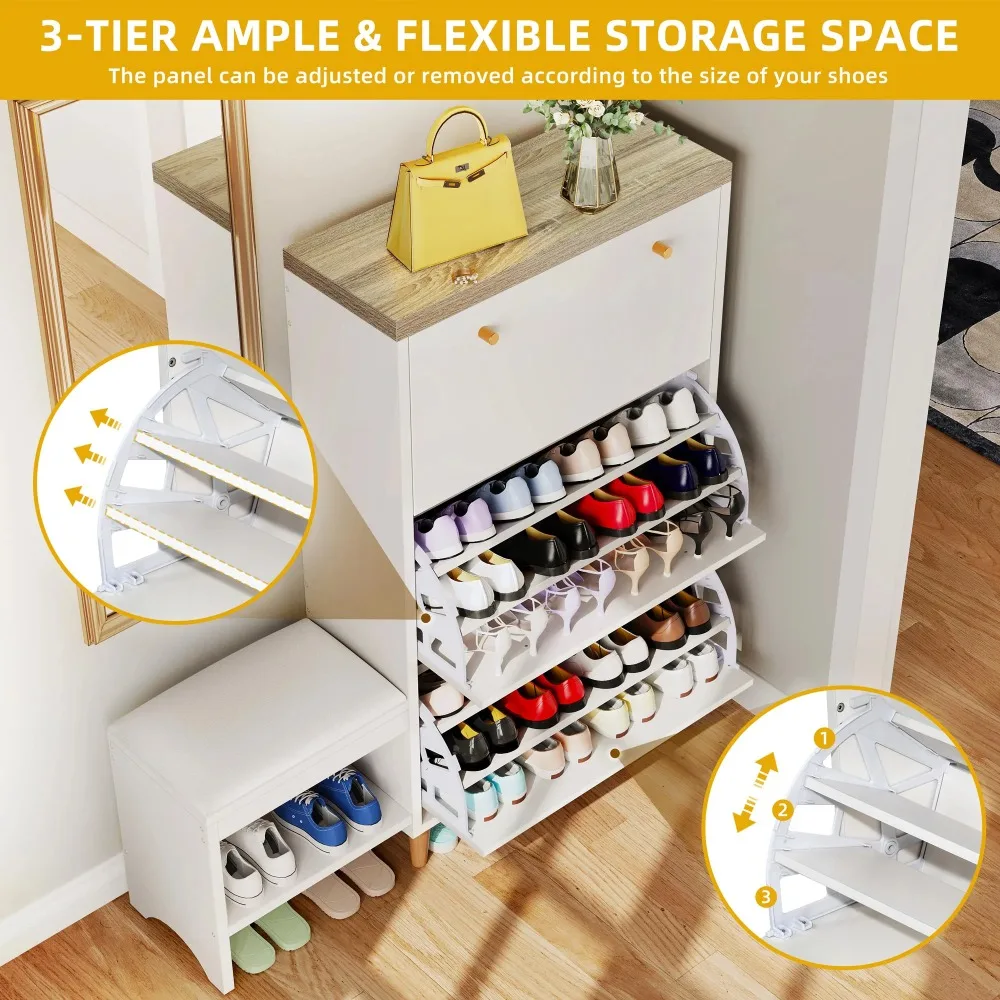
Entryway Bench with Cushion, Mudroom Bench with Cushion, Shoe Bench for Entryway
$1,186.63 Select options This product has multiple variants. The options may be chosen on the product pageCoat Rack Shoe Bench, Corner Entryway Bench, Corner Hall Tree, Shoe Bench for Entryway
$313.58 Select options This product has multiple variants. The options may be chosen on the product pageEntryway Bench with Back, Modern Entryway Bench, Shoe Bench for Entryway
Price range: $463.13 through $474.44 Select options This product has multiple variants. The options may be chosen on the product pageShoe Storage Bench for Entryway
$459.02 Select options This product has multiple variants. The options may be chosen on the product pageEntryway Bench with Shelf Storage, Shoe Bench for Entryway, Shoe Storage Bench
$194.08 Select options This product has multiple variants. The options may be chosen on the product pageCorner Entryway Bench, Entryway Bench with Cushion, Modern Entryway Bench, Shoe Bench for Entryway
$476.34 Select options This product has multiple variants. The options may be chosen on the product page
Smart Minimalist Storage: What to Look For
When selecting storage pieces for a minimalist entryway, prioritize these features:
Quality Indicators
- Solid wood construction or high-grade engineered wood
- Metal hardware with smooth operation
- Dovetail or box joints rather than stapled construction
- Weight capacity appropriate for intended use
- Warranty coverage indicating manufacturer confidence
Design Elements That Support Organization
- Divided spaces that naturally separate different items
- Adjustable components that adapt to changing needs
- Hidden storage to maintain visual simplicity
- Clean lines that don’t collect dust
- Proportions that fit your specific entryway dimensions
The best compact storage options for minimal spaces combine these quality features with space-efficient design, creating storage that remains functional for years while maintaining its aesthetic appeal.
Frequently Asked Questions About Minimalist Entryway Organization
How do I maintain a minimalist entryway with children?
Children can adapt to minimalist principles when systems are designed with them in mind. Create child-height hooks and storage, establish clear routines, and implement a “one in, one out” policy for toys and accessories. Most importantly, make organization playful rather than punitive, and recognize that children’s versions of minimalism may look different from adults’.
Can a minimalist entryway still feel warm and welcoming?
Absolutely! Minimalism doesn’t mean sterile or cold. Incorporate warm lighting, natural materials like wood and textiles, and one or two meaningful decorative elements. A minimalist entryway focuses on quality over quantity, not the complete absence of character.
What items should never be stored in an entryway?
Avoid storing rarely used seasonal equipment, paperwork/bills, sentimental items, food/drinks, or anything requiring privacy. The entryway should only contain items used in the process of entering and exiting your home, not general overflow storage.
Is it possible to have a truly minimalist entryway in a small apartment?
Yes, but it requires more discipline. In small spaces, be even more selective about what stays in the entryway versus what can be stored elsewhere. Consider wall-mounted solutions that utilize vertical space, and select scaled-down furniture specifically designed for compact areas. Space-saving solutions for small homes can transform even the tiniest entry areas.
Transform Your Entryway: 3-Step Quick Start Plan
Ready to create your minimalist entryway? Follow this weekend transformation plan:
Step 1: Weekend Declutter (2-3 hours)
Remove everything from your entryway completely. Sort into three categories:
– Daily essentials (keep in entryway)
– Seasonal needs (store elsewhere but accessible)
– Rarely/never used (donate, sell, or relocate)
Be ruthless—if you haven’t used it in the past season, it doesn’t belong in your primary entryway.
Step 2: Assess and Plan (1 hour)
Measure your available space precisely. List the specific functions your entryway needs to serve and the exact items it needs to store. Match these needs to appropriately scaled storage solutions that maintain clean lines and open space.
Step 3: Implement Systems (3-4 hours)
Install your selected storage solutions, ensuring each item has a specific home. Create simple labels if needed for family members. Establish your daily reset routine and maintenance schedule, then practice it for a week until it becomes automatic.
Success looks like: entering your home and having an immediate place for everything you’re carrying, being able to find what you need when leaving, and maintaining the space with just 60 seconds of daily attention.
The right furniture to implement in your organization plan will make this transformation not just possible but sustainable for the long term.
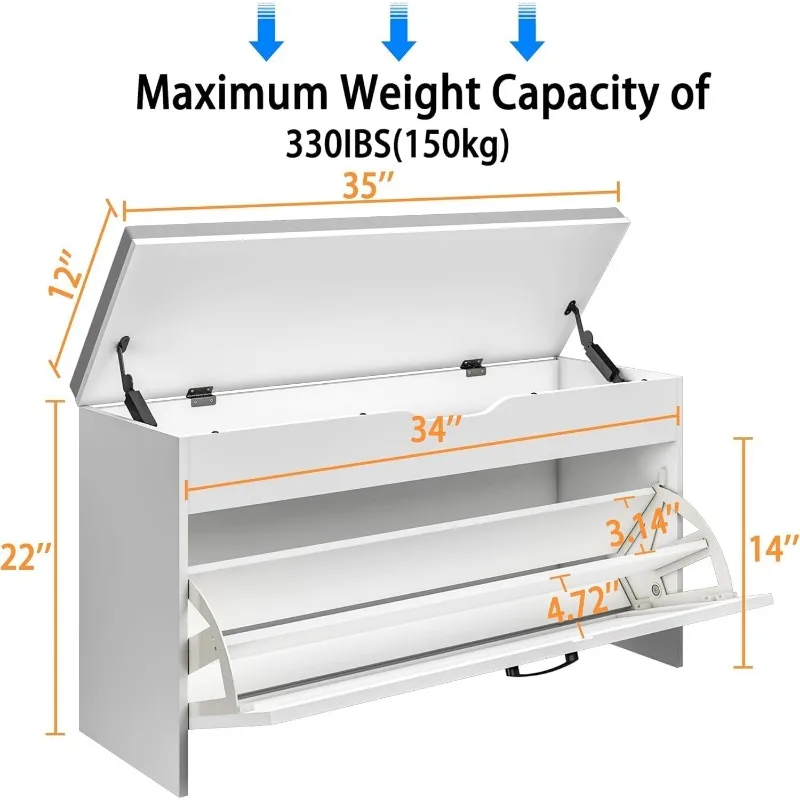
A minimalist entryway isn’t about deprivation—it’s about intentionally designing a space that supports your daily life while providing a peaceful transition between the outside world and your home sanctuary. By applying these principles and selecting quality organization systems, you’ll create an entrance that welcomes you home with calm efficiency every day.

